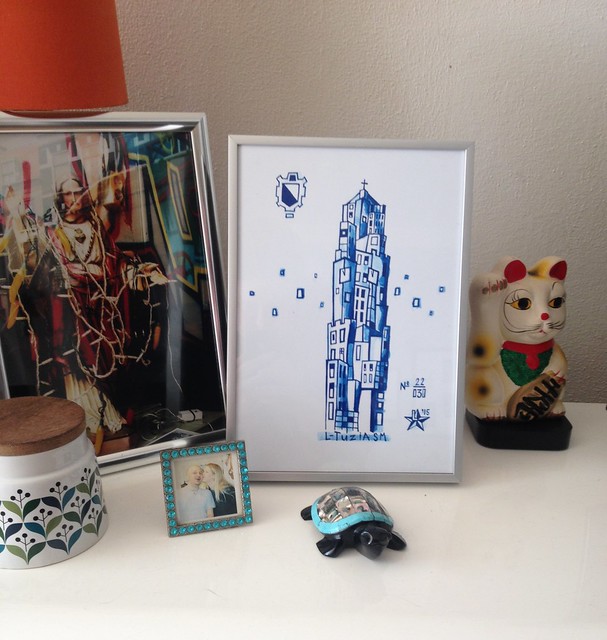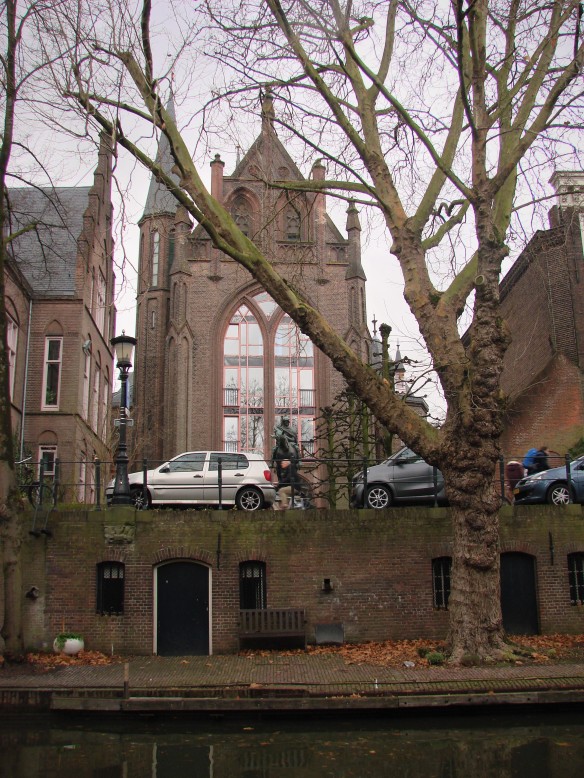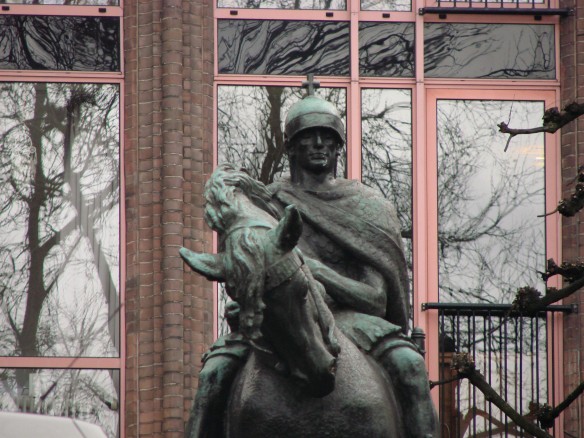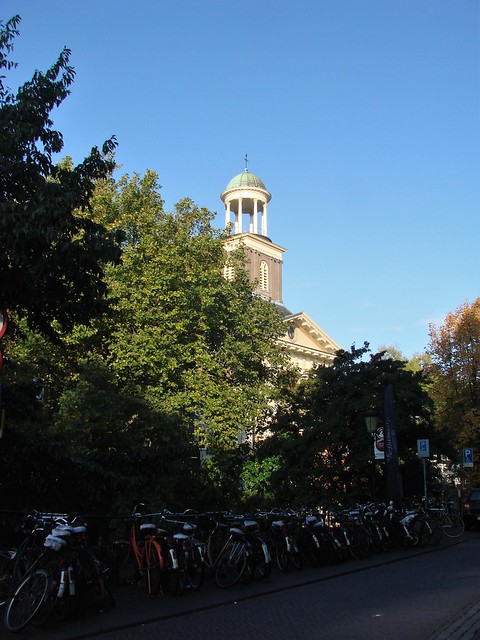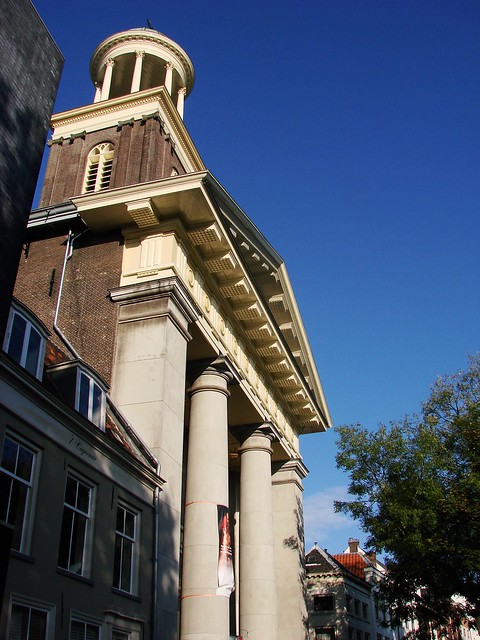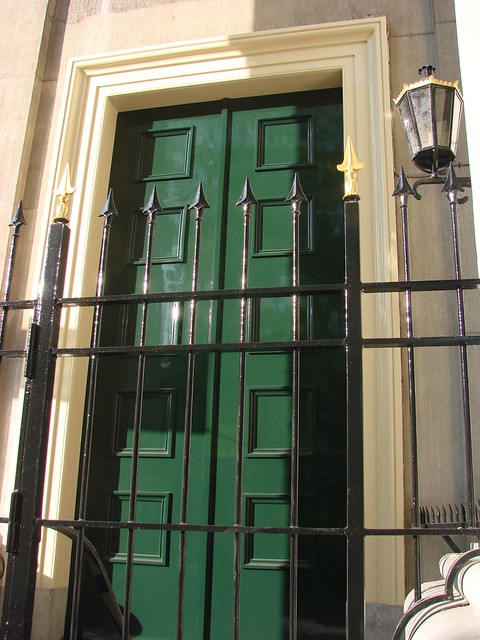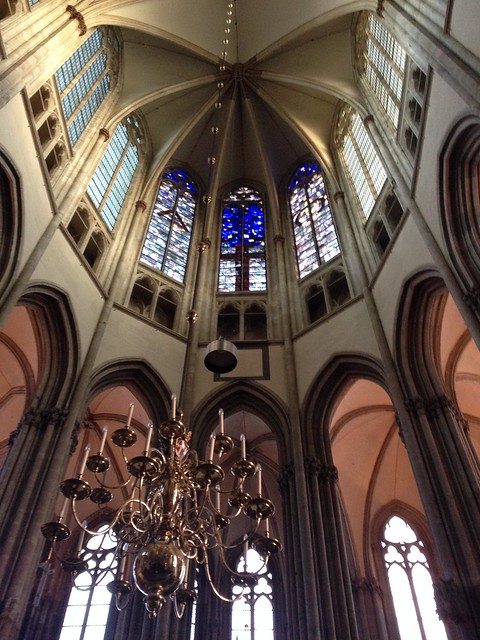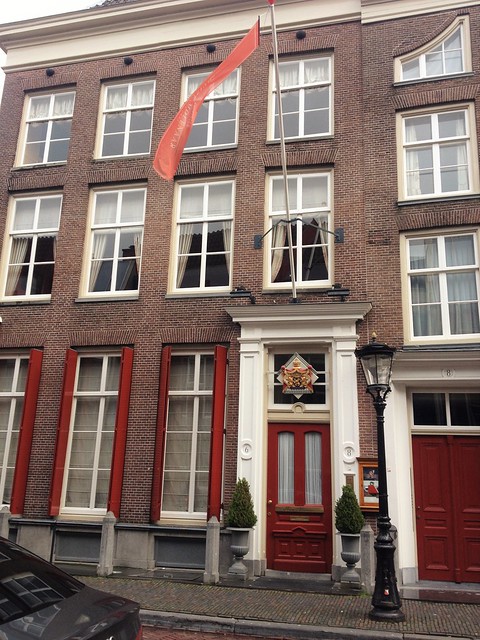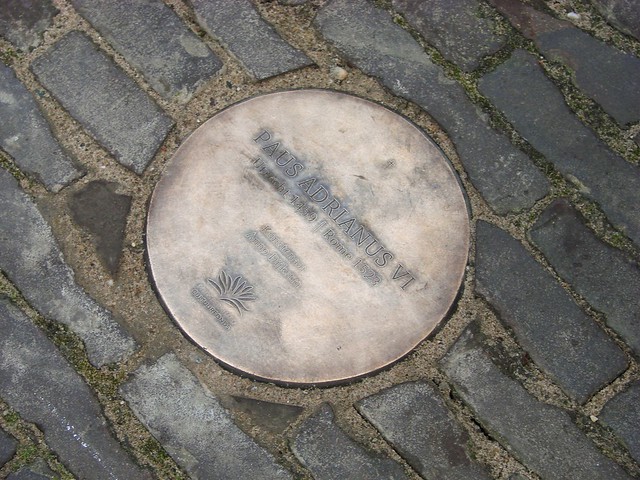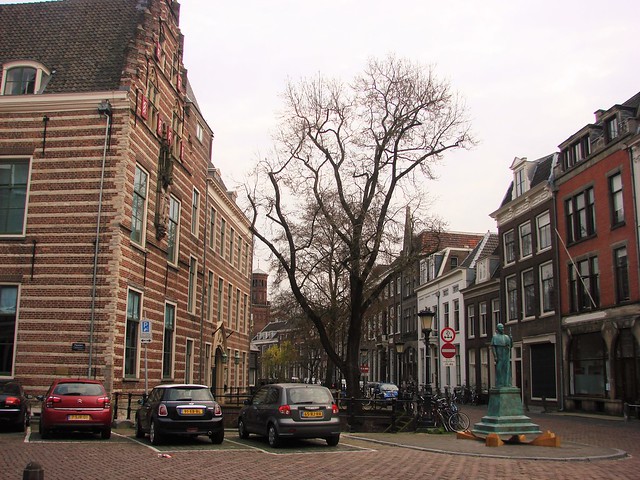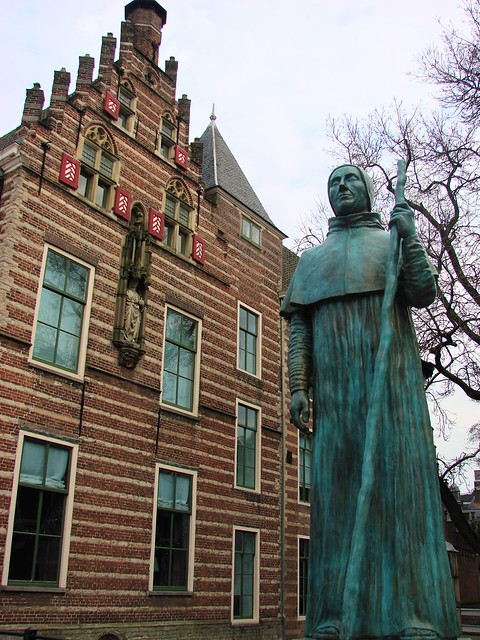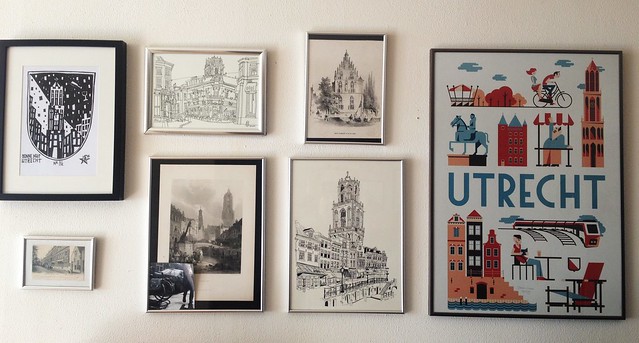
It should come as no surprise that I have a fondness for old photos of Utrecht and contemporary art inspired by the city. Over the past few years, I’ve been creating my own little collection. I don’t have as much as I would like, but I do have a list of artists and images I hope to add some day. For now, though, I have a small gallery wall that makes me happy.
The large print on the right was one of my first pieces. I’d seen it on Pinterest first, actually, but couldn’t find any info about it at the time (one of the drawbacks of the site). Eventually, though, I found the print itself at one of the local art stores and couldn’t resist. It’s a great collection of Utrecht symbols including lovely Lepelenburg Park, the Willibrord statue, Broodje Mario, the train station, and one of Rietveld’s chairs. What’s not to love?
To the left is an old print of the Paushuiz as it originally looked before the additions. Beneath that is the first print I bought from Ellessi at one of the Christmas markets. I just fell in love with her style. That day, I’d seen the next print to the left, on the top, but hadn’t had enough money with me to get it. The next time she was in town at one of the markets, I went specifically to get it. It’s a view of one of the cafés at the Donkere Gaard, as seen from another café that I frequent from time to time. Beneath that is another old print of the Oudegracht and the old crane that used to stand by the Winkel van Sinkel. Tucked in the corner is one of my own small photos that I have a fondness for.
The small picture on the bottom left is an antique postcard of the Breyerskameren, a view I get daily, as it’s across the canal from the park where we’ve taken our dogs over the years.
And on the top far left is my first print from L-Tuziasm. He’s a local artist I’ve written about previously. I absolutely love his work and hope to purchase one of his paintings some day. Each year, though, he does a limited print of the Domtoren. This was the first one I was able to get. However, I recently added a second one, the most recent one he’s done.
I had requested my copy, but a while later he contacted me to work out a barter. He was putting together a catalogue of some of his work and wanted to include an English translation. I helped him with that in exchange for the print (and a copy of the catalogue). Awesome deal! I might need another print before I can hang it, in order to get things balanced. For now, it’s sitting happily beneath the gallery wall, with one of my own photos and a few odds and ends.
